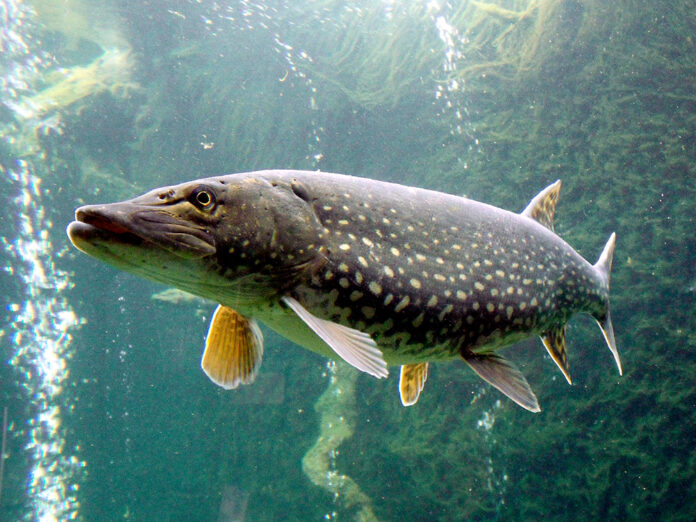
BY HARRY WEEKES
The other day, I had the strangest thing happen. I was sitting in school, listening to another person tell a story and, suddenly, I was overcome by the smell of a northern pike. That’s right, a northern pike. If you are unfamiliar with northerns, as my grandparents always called them (or snakes, due to their long bodies), they are a powerful, predatory fish common to the waters of Minnesota where I went as a kid.
A northern likes to fight. Once on, your line cuts through the water, reel whining and clicking as the fish moves away and back in, before an invariable and wonderful explosion of snapping, writhing fish that represents both an instant and a snapshot of forever. If you get the fish to the boat, they are a sleek tube of muscle. The ones we caught came out of water the color of flat soda, so they were dark, with beautiful spots. Because of their teeth, we were cautioned against getting anywhere near their mouths, so we ended up clutching them in such a way that our hands smelled rather fishy. Rather northern pikey.
And so there I was, sitting in a classroom, at school, in Hailey, Idaho, in the middle of winter, really smelling a northern pike. The smell opened an entire ecosystem in an instant. Pine Creek, a ribbon of water connecting Pine Lake to Trout Lake. Water lilies and muskeg and a quiet dipping of canoe paddles. The subtle hissing and scratching of emergent aquatic plants moving down the side of the boat as we pushed along in a stream whose direction was indecipherable because the water moved so slowly.
It is completely impossible to describe the fullness of the memory and its association to that smell. In an instant, I saw a world—rich, detailed, and completely populated with everything from the flora and fauna of Northern Minnesota, to an overfilled tackle box sitting open with its shelves cantilevered out, to my mom and various family members churning along in their canoes.
The vividness of this experience lingered when, the other morning, I was standing, without my glasses, in the darkness of my closet. Out the window there is a small aspen tree, a consistent lone figure poking out of the snow. At the base of the tree there was a dark smudge moving around. That smudge is not consistent. I got my glasses and ran back to the window, only to scare off a canid—either a fox or a coyote.
Hours later, in the full daylight, when the dogs finally got up, I let Olive, our smallest dog, out the side door. She walked onto the patio, her nose twitching, then shot up the snowbank, and immediately started barking as a ridge of hair on her back let me know she was barking at one of those things that makes the hair on her back stand up.
She stared at the side of the house from which the early-morning-smudge-fox-coyote came, the very end of her tiny, dark nose moving back and forth.
Dogs construct a world out of a sense we consider secondary, and yet one that has the power to transport us to entirely different places almost instantly.
As Olive patrolled the yard, led by her nose, I remembered that northern. I knew what Olive was smelling. Now, I was wondering, “What is she seeing?”
Harry Weekes is the founder and head of school at The Sage School in Hailey. This is his 50th year in the Wood River Valley, where he lives with Hilary and one of their three baby adults—Simon. The other members of the flock, Georgia and Penelope, are currently fledging at Davidson College in North Carolina and Middlebury College in Vermont, respectively.


